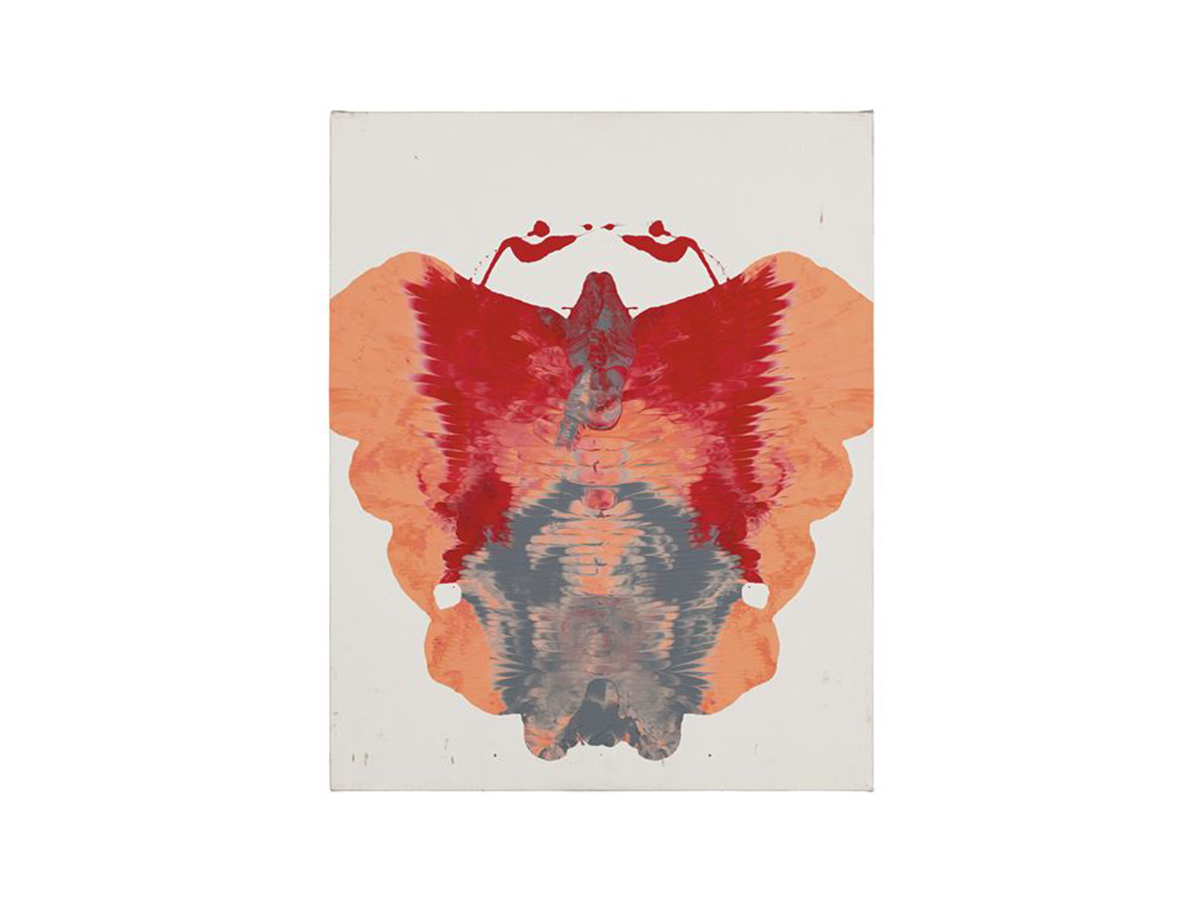Art World Players Rethink The Auction Marketplace
A new peer-to-peer digital platform lets high-end collectors buy and sell without the middleman.
Collectors have long enlisted dealers or auction houses to help resell their art holdings because such insiders typically have up-to-date pricing data and access to potential buyers.
Now, in the latest challenge to the art world’s status quo, a team led by former Sotheby’s rainmaker Adam Chinn plans to launch a peer-to-peer digital marketplace later this month that will invite collectors to sell high-end art to each other, directly and anonymously. Listings in an early version of the site, called LiveArt Market, include an Andy Warhol “Rorschach” from 1984 valued around US$200,000 and Jack Pierson’s 2009 sign, “Glory,” valued around US$85,000.
The move comes as all sorts of art-world players rethink the traditional ways art gets traded online, from former Christie’s auctioneer Loïc Gouzer’s Fair Warning auction app to the proliferation of digital platforms selling NFT artworks. Even as the art world’s attention increasingly pivots back to in-person art events including fairs, online sales of luxury goods remain robust and some top industry dealmakers see a bigger market opportunity in finding fresh ways to sell art to collectors accustomed to shopping for art online.
“Collectors go to gatekeepers because they need pricing info, but we want to put collectors in control,” said Mr Chinn, Sotheby’s former chief operating officer. Late last year, he teamed up with artificial intelligence experts and former auction specialists like George O’Dell to buy and retool Live Auction Art, then an auction-tracking data site. The new owners have now equipped the site, renamed LiveArt, with machine-learning technology so it can analyze auction data and give users free, real-time estimates of their collection’s likely market value. The key to success will be convincing collectors that LiveArt’s pricing and provenance services are as reliable as those collectors would get from the auction houses.
The architect behind the tech is Boris Pevzner, a graduate of MIT known for creating and selling several companies that use AI-driven algorithms, including one that resolves freight-shipping issues and another that manages art collections, Collectrium, that he sold to Christie’s in 2015.
Starting later this month, LiveArt will add the marketplace component to double as an online platform for private art sales. People can upload artworks and specify any details they want shared or kept from potential buyers, including their own identities. Once listed, an artificial intelligence bot on the site will help them sift offers or field questions from potential buyers—like bots on retailer sites already do—as well as mediate deal terms so both parties remain discreet, if they choose. Once under contract, the seller will be asked to ship the work to the company’s clearinghouse in Delaware, where conservators and former auction specialists will check its condition and vet provenance before sending it on to its buyer, Mr. Chinn said.
He added that LiveArt has hired a team of provenance researchers, including some from Phillips, to vet work and if there are provenance disputes between buyers and sellers, the site will offer mediation. (LiveArt only charges buyers a flat 10% fee for any sales versus the big auction houses which can charge more than 20%.)
Christie’s and Sotheby’s didn’t immediately comment on Mr. Chinn’s new venture.
New York art adviser Alex Glauber, who isn’t involved with the venture, said the matchmaking element of a peer-to-peer digital marketplace could “solve a practical problem” for collectors who want to sell middle-market pieces without paying steeper fees to an auction house or wrangling a gallery to promote their consignments ahead of the gallery’s own inventory or artists.
Mr. Glauber said he plans to upload a few pieces to test the experience before he suggests it to his clients. He said the challenge will lie in persuading a “critical mass” of sellers, who typically prize discretion, to reveal the art they’ve got in storage. “Even with all the security assurances, some people may be reluctant to push their pieces online,” he said. “It’s going to take some convincing.”
David Rogath, a Connecticut collector who owns pieces by David Hockney and René Magritte, said he also has no ties to the venture but said he has bought and sold plenty of art through Mr. Chinn during his tenure at Sotheby’s, so he’s intrigued by the platform. “I have things I want to sell and things I don’t want anyone outside my family to know I own, and Adam understands discretion is key,” Mr. Rogath said.
Mr. Rogath said he used LiveArt’s pricing tool to test the values for several works he’s owned over the years and said he found them accurate. Mr. Rogath also said the site appears to smooth out some “speed bumps” that have historically dissuaded top collectors from brokering major sales to each other, including the logistics of hiring third parties to research and vouchsafe a piece’s condition and authenticity. If a platform can take over those real-world hassles, he said, “For a collector, there’s an allure to cutting out the middle man.”
Reprinted by permission of The Wall Street Journal, Copyright 2021 Dow Jones & Company. Inc. All Rights Reserved Worldwide. Original date of publication: May 5, 2021
 Copyright 2020, Dow Jones & Company, Inc. All Rights Reserved Worldwide. LEARN MORE
Copyright 2020, Dow Jones & Company, Inc. All Rights Reserved Worldwide. LEARN MORE
This stylish family home combines a classic palette and finishes with a flexible floorplan
Just 55 minutes from Sydney, make this your creative getaway located in the majestic Hawkesbury region.
As Paris makes its final preparations for the Olympic games, its residents are busy with their own—packing their suitcases, confirming their reservations, and getting out of town.
Worried about the hordes of crowds and overall chaos the Olympics could bring, Parisians are fleeing the city in droves and inundating resort cities around the country. Hotels and holiday rentals in some of France’s most popular vacation destinations—from the French Riviera in the south to the beaches of Normandy in the north—say they are expecting massive crowds this year in advance of the Olympics. The games will run from July 26-Aug. 1.
“It’s already a major holiday season for us, and beyond that, we have the Olympics,” says Stéphane Personeni, general manager of the Lily of the Valley hotel in Saint Tropez. “People began booking early this year.”
Personeni’s hotel typically has no issues filling its rooms each summer—by May of each year, the luxury hotel typically finds itself completely booked out for the months of July and August. But this year, the 53-room hotel began filling up for summer reservations in February.
“We told our regular guests that everything—hotels, apartments, villas—are going to be hard to find this summer,” Personeni says. His neighbours around Saint Tropez say they’re similarly booked up.
As of March, the online marketplace Gens de Confiance (“Trusted People”), saw a 50% increase in reservations from Parisians seeking vacation rentals outside the capital during the Olympics.
Already, August is a popular vacation time for the French. With a minimum of five weeks of vacation mandated by law, many decide to take the entire month off, renting out villas in beachside destinations for longer periods.
But beyond the typical August travel, the Olympics are having a real impact, says Bertille Marchal, a spokesperson for Gens de Confiance.
“We’ve seen nearly three times more reservations for the dates of the Olympics than the following two weeks,” Marchal says. “The increase is definitely linked to the Olympic Games.”

Getty Images
According to the site, the most sought-out vacation destinations are Morbihan and Loire-Atlantique, a seaside region in the northwest; le Var, a coastal area within the southeast of France along the Côte d’Azur; and the island of Corsica in the Mediterranean.
Meanwhile, the Olympics haven’t necessarily been a boon to foreign tourism in the country. Many tourists who might have otherwise come to France are avoiding it this year in favour of other European capitals. In Paris, demand for stays at high-end hotels has collapsed, with bookings down 50% in July compared to last year, according to UMIH Prestige, which represents hotels charging at least €800 ($865) a night for rooms.
Earlier this year, high-end restaurants and concierges said the Olympics might even be an opportunity to score a hard-get-seat at the city’s fine dining.
In the Occitanie region in southwest France, the overall number of reservations this summer hasn’t changed much from last year, says Vincent Gare, president of the regional tourism committee there.
“But looking further at the numbers, we do see an increase in the clientele coming from the Paris region,” Gare told Le Figaro, noting that the increase in reservations has fallen directly on the dates of the Olympic games.
Michel Barré, a retiree living in Paris’s Le Marais neighbourhood, is one of those opting for the beach rather than the opening ceremony. In January, he booked a stay in Normandy for two weeks.
“Even though it’s a major European capital, Paris is still a small city—it’s a massive effort to host all of these events,” Barré says. “The Olympics are going to be a mess.”
More than anything, he just wants some calm after an event-filled summer in Paris, which just before the Olympics experienced the drama of a snap election called by Macron.
“It’s been a hectic summer here,” he says.

AFP via Getty Images
Parisians—Barré included—feel that the city, by over-catering to its tourists, is driving out many residents.
Parts of the Seine—usually one of the most popular summertime hangout spots —have been closed off for weeks as the city installs bleachers and Olympics signage. In certain neighbourhoods, residents will need to scan a QR code with police to access their own apartments. And from the Olympics to Sept. 8, Paris is nearly doubling the price of transit tickets from €2.15 to €4 per ride.
The city’s clear willingness to capitalise on its tourists has motivated some residents to do the same. In March, the number of active Airbnb listings in Paris reached an all-time high as hosts rushed to list their apartments. Listings grew 40% from the same time last year, according to the company.
With their regular clients taking off, Parisian restaurants and merchants are complaining that business is down.
“Are there any Parisians left in Paris?” Alaine Fontaine, president of the restaurant industry association, told the radio station Franceinfo on Sunday. “For the last three weeks, there haven’t been any here.”
Still, for all the talk of those leaving, there are plenty who have decided to stick around.
Jay Swanson, an American expat and YouTuber, can’t imagine leaving during the Olympics—he secured his tickets to see ping pong and volleyball last year. He’s also less concerned about the crowds and road closures than others, having just put together a series of videos explaining how to navigate Paris during the games.
“It’s been 100 years since the Games came to Paris; when else will we get a chance to host the world like this?” Swanson says. “So many Parisians are leaving and tourism is down, so not only will it be quiet but the only people left will be here for a party.”
This stylish family home combines a classic palette and finishes with a flexible floorplan
Just 55 minutes from Sydney, make this your creative getaway located in the majestic Hawkesbury region.






















